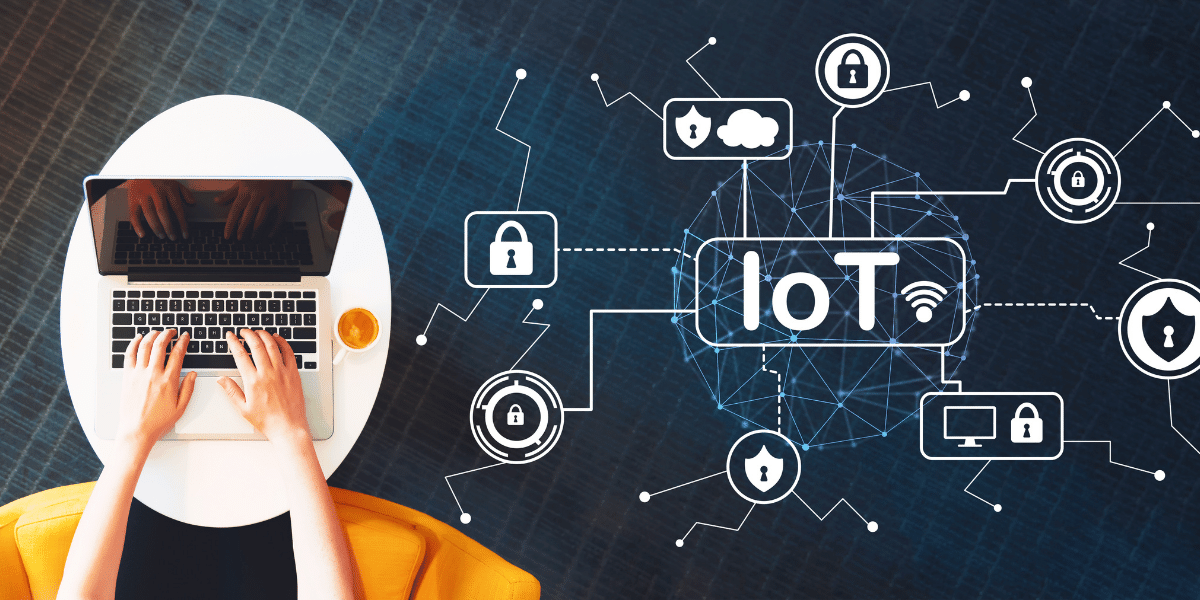Understanding the Internet of Things (IoT) Trend
The Internet of Things, or IoT, refers to the network of physical devices—from everyday household items to industrial machinery—that use sensors and software to connect and exchange data over the internet. This digital revolution is about more than just smart appliances or wearable tech; it’s about an extensive network of connected “things” communicating and interacting in ways that bring significant changes to businesses across industries.

Current Internet of Things (IoT) Trends
- Industrial IoT (IIoT): IIoT is a subfield of IoT, where connected devices are used within industrial sectors. It has the potential to drastically improve operational efficiency, safety, and productivity. For instance, predictive maintenance enabled by IIoT can help identify equipment issues before they cause downtime. Moreover, IIoT can provide real-time operational data, helping managers make informed decisions.
- Smart Homes and Cities: IoT technology is transforming homes and cities into ‘smart’ entities. In smart homes, appliances like thermostats, lighting systems, and even refrigerators can communicate with each other, automate tasks, and be remotely controlled. On a broader scale, smart cities use IoT devices for traffic management, waste management, and energy efficiency. These developments are creating new business opportunities in sectors like construction, energy, and transportation.
- Healthcare IoT: IoT in healthcare, also known as the Internet of Medical Things (IoMT), is enhancing patient care and hospital management. Devices like wearable fitness trackers and remote patient monitoring devices collect vital health data, enabling personalized and timely care. Additionally, IoT devices can track the location and status of medical equipment, improving hospital efficiency.
- IoT in Retail: Retailers are increasingly using IoT for inventory management, customer experience enhancement, and personalized marketing. For example, smart shelves can monitor stock levels in real time, while IoT-enabled beacons can send personalized offers to customers’ smartphones based on their in-store location.
- IoT Security: As IoT networks expand, they become more attractive targets for cyberattacks. This is leading to a growing focus on IoT security, including the development of standards and protocols for secure data transmission and storage.
How Businesses Can Respond to the IoT Trend
- Invest in IoT Infrastructure: Adopting IoT requires significant infrastructure changes. Businesses need to install sensors and devices, ensure reliable internet connectivity, and implement IoT platforms to manage and analyze data. This may require substantial investment, but the long-term benefits in terms of efficiency and cost savings can be significant.
- Ensure Data Security: With the increased data flow from IoT devices, businesses must prioritize data security. This involves implementing secure data encryption, user authentication, and regular software updates. Businesses should also comply with data privacy regulations and inform customers about how their data is being used and protected.
- Leverage IoT Data: IoT devices generate vast amounts of data that can provide valuable insights. However, to leverage this data effectively, businesses need robust data analytics capabilities. This can involve investing in data analytics software and training staff to interpret the data.
- Collaborate with IoT Experts: Implementing IoT can be complex, and businesses may benefit from partnering with IoT service providers or consultants. These experts can provide guidance on the latest IoT trends, help design and implement IoT solutions, and provide ongoing support and training.
Conclusion
The era of the Internet of Things (IoT) is not merely on the horizon; it’s here. As the IoT continues to evolve, its impact on businesses of all sizes and across all industries is expected to grow exponentially. This technological revolution represents a paradigm shift in how businesses operate, offering opportunities for increased efficiency, improved decision-making, enhanced customer experiences, and the creation of new business models.
However, embracing the IoT is not without its challenges. It requires a significant investment in infrastructure, an understanding of the associated security risks, and the ability to manage and analyze the vast amounts of data generated. Furthermore, it necessitates a cultural shift, with businesses needing to embrace a more data-driven approach and foster innovation.
Successful adoption of IoT technologies requires a strategic, well-considered approach. Businesses must understand their specific needs and capabilities and develop a clear IoT strategy. This strategy should outline the key objectives, identify where IoT can add value, and detail the required resources and infrastructure.
Moreover, it’s crucial for businesses to stay abreast of the latest IoT trends and continually evaluate and adjust their strategies as the landscape evolves. This may involve collaborating with IoT experts, investing in ongoing staff training, and keeping up-to-date with the latest developments in IoT technology and security.
Finally, businesses should also consider the ethical implications of IoT technology, including issues around data privacy and the potential impact on jobs. Open dialogue with stakeholders, clear communication about data usage and security measures, and thoughtful, ethical decision-making will be key to maintaining trust as businesses navigate the IoT journey.
In conclusion, the IoT represents a significant opportunity for businesses ready to embrace it. While the journey may be complex, the potential rewards – in terms of efficiency, innovation, and competitive advantage – are substantial. As we move further into the digital age, the businesses that can successfully leverage the power of the IoT will be well-positioned to lead in their respective markets.
If you’re interested in learning more about products for Internet of Things and how they can transform your business, please feel free to reach out to us: router-switch.com
Read More
Cisco Launches Internet of Things Division, Eyes Standardization
